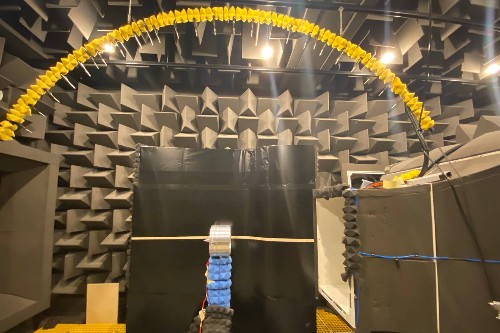Universities of Nottingham and Warwick are involved with Pratt & Whitney Canada and Collins Aerospace in a new project to supply hybrid electric powertrain technology to Airbus.
Read more HERE
Universities of Nottingham and Warwick are involved with Pratt & Whitney Canada and Collins Aerospace in a new project to supply hybrid electric powertrain technology to Airbus.
Read more HERE
The University of Nottingham recently also secured more than £70 million to establish new world-leading and open-access research facilities and programmes that will decarbonise future transport, including aviation. The funding is secured based on a £14 million award from the UK Research Partnership Investment Fund (UKRPIF). This is augmented by both public and private co-investment that will allow the university to build on its existing internationally leading capabilities in electrification, hydrogen and manufacturing. “This is one of the largest funding injections the East Midlands has ever seen, and the opportunities are clear for new research to enable the UK to take an international lead in powering transport,” said Professor Chris Gerada. More info here.
Altair has signed a memorandum of understanding with the UK-based University of Nottingham for a digital twin project within the aerospace sector. The digital twin—set to be the first of its kind—will not merely be a technology demonstrator, but a fully-fledged solution the industry can use to rapidly design, validate, and test the electric propulsion systems of new aircraft or advanced air mobility (AAM) vehicles and/or to evaluate the retrofit of existing ones. This MoU is a key achievement that supports the capabilities of the university’s new Zero Carbon Innovation Centre, co-funded by East Midlands Freeport, to build a complete digital twin of an electric propulsion system. More info here.
Involving the Universities of Nottingham and Manchester, GKN Aerospace Launches H2FlyGHT: Pioneering £44M Project for 2 MW Cryogenic Hydrogenn-Electric Propulsion
GKN Aerospace has launched H2FlyGHT, a revolutionary £44 million project. This initiative will develop a 2-megawatt (MW) cryogenic hydrogen-electric propulsion system, setting new standards for the future generation of larger sustainable aircraft. It is a collaborative GKN-led project with Parker Meggitt and the Universities of Manchester and Nottingham, supported by the UK Government’s Aerospace Technology Institute. University of Nottingham is supporting the full motor design and scale-up and cryogenic inverter technology development, essential for developing high-power, efficient propulsion systems. More info here.
Come and see us at Farnborough.
UK-ARC is established as a key part to the UK aerospace and aviation ecosystem, gathering academic knowledge and sharing it with industry and other stakeholders. We are working with the AGP on the Strategic Aerospace Research Forum, with the ATI on its non-CO2 roadmap and with the Hydrogen Capability Network (HCN) on exploiting university capabilities for the benefit of UK industry. UK-ARC thematic narratives on research challenges and opportunities are being explored by industry to help guide value added research.
Our challenges are the same as those being addressed by researchers in many countries so collaboration needs to be across borders as well as within the UK.
Bristol Composites Institute researchers have developed a new tool to investigate the Automated Fibre Placement (AFP) deposition process. The device aims to accelerate research into a wide range of AFP related topics. This links to the interests of the UK-ARC Materials and Manufacturing theme geared towards composites manufacturing.

The workings of the ultrasonic warning sounds produced by the wings of a species of moth have been revealed by researchers at the University of Bristol Composites Institute.
Structural buckling and sound production are rarely studied together, despite being reciprocal phenomena. In addition, buckling occurs as a sudden large deformation which can be attractive as a shape-changing mechanism in the field of morphing structures, such as in the aerospace industry, where engineers are looking to optimise the aerodynamic performance of wings.

The mystery of how futuristic aircraft embedded engines, featuring an energy-conserving arrangement, make noise has been solved by researchers at the University of Bristol.

Electric ducted fan mounted next to the curved surface.

Boundary layer ingesting (BLI) ducted fan test rig inside the aeroacoustics wind tunnel facility at the University of Bristol.
Image credits: Dr Feroz Ahmed
Research into improved aerodynamic performance and acoustic signature reduction are challenge areas for the UK-ARC More Energy Efficient Aircraft theme so this enhanced capability which can support collaborative projects aimed at next generation aviation.

Wind tunnel network receives funding | News and features | University of Bristol
Unprecedented £225M investment to create UK’s most powerful supercomputer in Bristol aligns with the UK-ARC ambition to exploit the potential of AI.
Aerospace applications are a potential heavy users of the AI capability in aero design and optimisation, so the investment last November is good news for academics contributions to aerospace advancement.

The National Composites Centre (NCC) which will host Isambard-AI